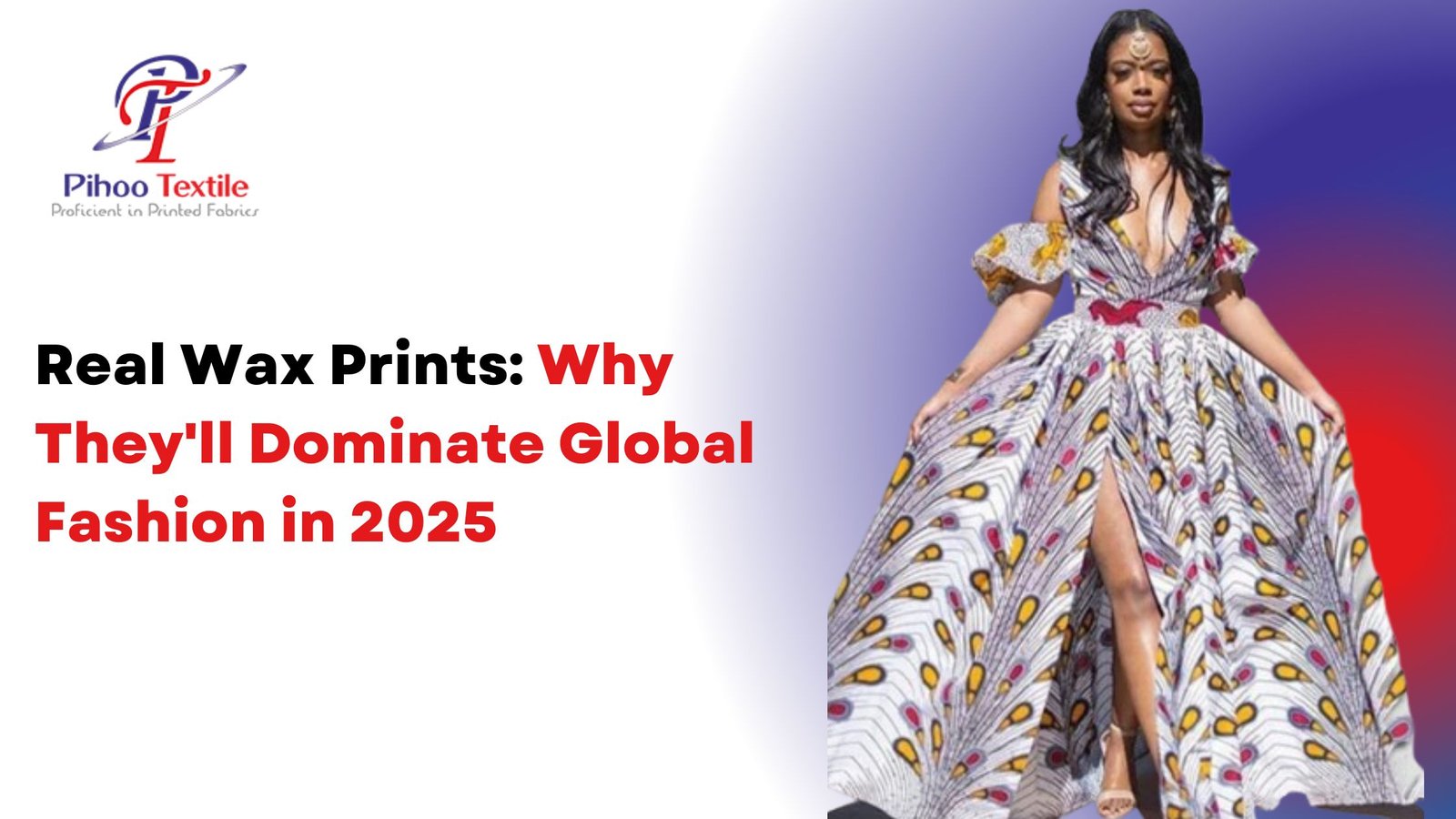Real Wax Prints: Why They’ll Dominate Global Fashion in 2025
The fashion industry has a pattern problem. Fast fashion cycles churn out trends that vanish within months, leaving consumers exhausted by constant novelty. Meanwhile, a textile tradition that’s survived centuries is making its return to center stage. Real wax prints—those vibrant, intricate fabrics rooted in African heritage—are set to capture global fashion in 2025. Not as a fleeting trend, but as a design language that bridges cultural authenticity with contemporary style.
What makes this resurgence different? Real wax prints offer what modern consumers increasingly demand: textiles with substance, story, and staying power. They combine bold visual impact with technical quality that lasts. As fashion capitals from Milan to New York put heritage textiles on their runways, wax prints stand out for their color saturation, symbolic motifs, and versatility across garment types. This piece breaks down why real wax prints will dominate, how they’re produced, and what makes them essential for any fashion-forward wardrobe in 2025.
Heritage and Cultural Significance of Real Wax Prints
Real wax prints carry more than pattern—they carry meaning.
These fabrics originated when Dutch traders adapted Indonesian batik methods for African markets in the 19th century. African communities transformed them into a distinct art form, creating designs that communicate identity, status, and occasion.
Each motif tells a story. Patterns reference proverbs, celebrate events, or mark life transitions. This symbolic depth sets wax prints apart from decorative fabrics that prioritize aesthetics alone.
Why Heritage Matters Now
Today’s consumers want to make purchases that connect to something larger than themselves. A 2024 textile survey found that 67% of global fashion buyers actively seek fabrics with cultural narratives. Real wax prints deliver this connection authentically, without manufactured backstories.
Unique Production Techniques That Set Real Wax Prints Apart
Not all printed fabrics qualify as real wax prints.
Authentic wax prints use a resist-dyeing method. Hot wax gets applied to 100% cotton fabric, creating barriers that control dye absorption. The process repeats for each color layer, building depth and complexity. The result: fabric printed on both sides with slight variations that add character.
Quality Indicators
Real wax prints meet specific standards:
- 100% cotton base with 200 gsm density minimum
- Double-sided printing with color penetration through the fabric
- Wax-resist crackle patterns that create signature texture
- Vibrant, colorfast dyes that maintain intensity through washing
Mass-produced imitations skip the wax-resist process entirely, using standard printing that fades quickly and lacks dimensional texture.
Vibrant Colors and Iconic Patterns Leading 2025 Fashion Trends
Color psychology drives fashion decisions, and wax prints leverage this powerfully.
The dominant 2025 palette includes deep blues symbolizing wisdom, burnt oranges representing vitality, royal purples conveying creativity, and golden yellows expressing optimism. These aren’t arbitrary choices—they’re culturally grounded color selections that resonate across global markets.
Pattern Categories in Demand
- Geometric compositions: interlocking shapes and angular motifs that work for structured garments
- Botanical designs: stylized flowers and leaves that suit flowing silhouettes
- Abstract symbolism: patterns referencing traditional proverbs or concepts
- Hybrid prints: contemporary reinterpretations that blend cultural elements with minimalist design
The contrarian truth? While fashion forecasters predicted neutrals would dominate 2025, consumers are actively choosing bold prints instead. Color saturation is winning over muted minimalism.
Global Fashion Movements Embracing Real Wax Prints in 2025
Milan Fashion Week featured wax prints in 23% more collections compared to 2024—a significant jump that signals mainstream adoption.
Designers are moving beyond using wax prints for “ethnic” collections. Instead, they’re integrating them into everyday wear: tailored blazers, wide-leg trousers, structured coats, and statement accessories. This shift marks wax prints’ transition from niche textile to versatile fashion staple.
Fusion Fashion Takes Hold
The most interesting development combines wax print fabrics with Western construction techniques. Think: power suits in geometric wax prints, trench coats in botanical motifs, or bomber jackets with abstract patterns. This fusion respects the fabric’s origins while adapting it for contemporary contexts.
Styling Real Wax Prints for Today’s Wardrobe
Real wax prints work across style categories, from casual to formal.
Practical Styling Approaches
Start with one statement piece and build around it using neutrals. A wax print midi skirt pairs with a white cotton shirt. A printed blazer grounds dark denim.
For maximum impact, layer prints intentionally. Match one color from your wax print garment with a solid piece in the same shade. This creates cohesion without overwhelming the eye.
Accessories in wax print fabrics—scarves, headwraps, bags—let you test the aesthetic before committing to full garments. They’re also conversation starters that signal style confidence.
Why Real Wax Prints Will Dominate Global Fashion in 2025
Three converging factors make 2025 the year for real wax prints.
First, sustainability concerns push buyers toward quality over quantity. Wax prints’ durability means fewer replacements. Second, cultural appreciation drives demand for textiles with authentic origins rather than appropriated aesthetics. Third, visual saturation from digital life makes people crave tangible, textured experiences—which wax prints deliver through their dimensional patterns.
The uncomfortable truth for fast fashion brands? Consumers are willing to pay premium prices for fabrics that offer meaning and longevity. This shift threatens business models built on cheap, disposable textiles.
Conclusion
Real wax prints represent more than a 2025 trend—they’re a fundamental shift in how people approach fabric choices. Their combination of cultural depth, technical quality, and visual impact positions them as the textile language for fashion’s next chapter.
Pihoo Textile manufactures premium African Real Wax Prints using authentic production methods and 100% cotton base fabrics. Our Jetpur facility combines traditional craftsmanship with modern quality controls to deliver wax prints that meet international standards.
Ready to work with fabrics that make a statement? Explore our wax print collection or contact our team to discuss bulk orders and custom designs that elevate your product line.


